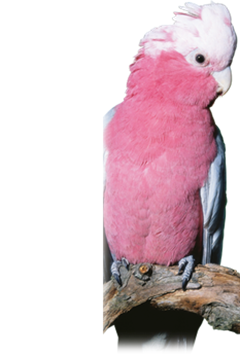Bird Care
Talking
The younger your bird is, the easier it will learn to pick-up words and phrases.
Although talking is an extension of your bird's normal chattering, you will need to exercise extreme patience while training it to talk. You will find speech training a lot easier if your bird has already learned to sit on your finger outside the cage, but it can be taught quite easily inside the cage too. If you do choose to train your bird outside the cage, hold your bird close to your face, always talking to it in a gentle and calming voice so it does not fly off.
Once it is used to being close to your face, repeat the word, or phrase, you want it to master over and over. Once again, exercise extreme patience throughout the whole of the training or you could frighten your bird. Do this for two to three minutes and then let it rest. It is better to have many short sessions of speech training daily, rather than one big long session that will only tire both of you.
Another good idea is to repeat the word, or phrase, each time you pass by the cage, even when you are not conducting an 'official' training session - this will help to reinforce the training.
Try not to teach your bird more than two or three words at a time as it simply will not be able to handle the request for more. Generally, it is best to wait until your bird has mastered a word before moving on to another one. Words should be short - one or two syllables - some birds will not be able to get their tongue around three syllables, and phrases should not contain more than three or four words.
Depending on the species, your bird will be able to hold a vocabulary of 10 words, but this can be increased up to 30 words if both you and your bird are keen and committed to keep learning in an easy and trusting environment.
If you follow these few simple rules, you will soon have happy and talkative, feathered companion that will add a whole new dimension to your relationship.
